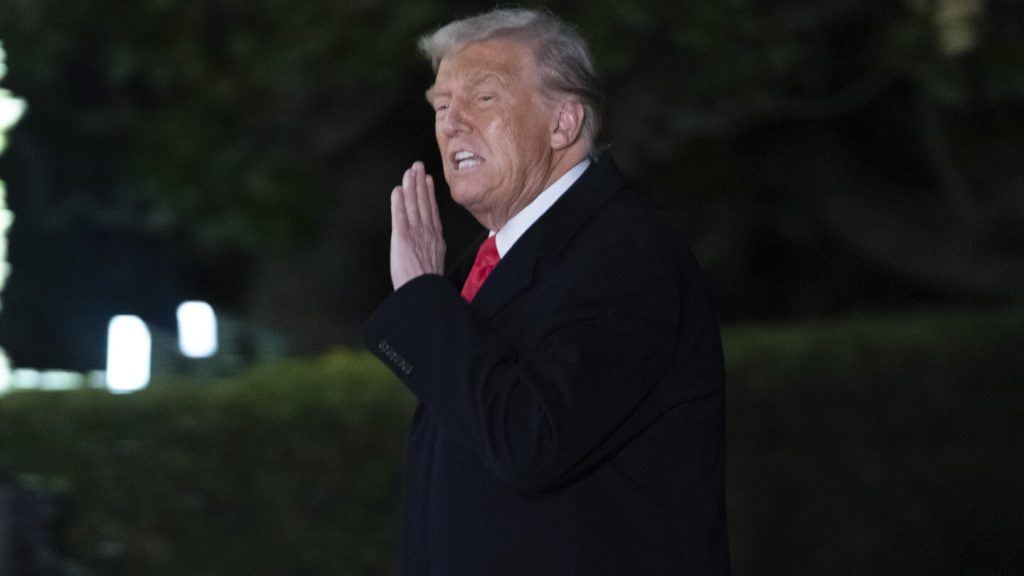Trump’s Plan to Downsize Federal Workforce Hits Legal Roadblock
In a significant blow to President Donald Trump’s efforts to reduce the size of the federal workforce, a courtroom hearing on Monday afternoon upheld a pause on his controversial plan. This marks the latest instance where Trump’s ambitious initiatives have been entangled in legal challenges, highlighting the growing role of the judicial system in shaping the administration’s policies. U.S. District Judge George O’Toole Jr. had initially halted the program last week, and on Monday, he ruled that the stay would remain in effect until he issues a final decision. The timeline for this ruling remains unclear, leaving the fate of Trump’s plan uncertain.
Trump’s proposal, which has drawn both praise and criticism, aims to incentivize government employees to leave their jobs through financial buyouts. As of Friday, the White House reported that 65,000 federal workers had accepted the offer. However, the program has been met with fierce opposition from labor unions, which argue that the plan is illegal and undermines the stability of the federal workforce. Speaking to reporters in the Oval Office on Monday, Trump criticized federal employees who continue to work remotely, stating, “Nobody is gonna work from home. They are gonna be going out, they’re gonna play tennis, they’re gonna play golf, they’re gonna do a lot of things. They’re not working.”
The Role of Elon Musk in Shaping the Plan
The deferred resignation program, also referred to as a buyout plan, has been championed by Elon Musk, who is serving as Trump’s top adviser on reducing federal spending. Under the plan, employees who opt to resign would stop working immediately but continue to receive pay until September 30. While the administration has framed this as a cost-saving measure, critics argue that the program is an attempt to reshape the federal workforce by replacing long-term employees with individuals more aligned with the administration’s agenda.
Labor unions have been vocal in their opposition, describing the plan as “unprecedented” and raising serious concerns about its legality and rationale. Elena Goldstein, speaking on behalf of the workers, accused the Office of Personnel Management (OPM) of improvising the program without proper oversight or justification. “OPM seems to be making this up as they are going along,” she said. Goldstein emphasized that the plan appears to be a pretext for removing federal employees and replacing them with individuals who are more politically aligned with the current administration.
Legal Challenges and Arguments
The legal battle over Trump’s plan has brought to light deeper questions about the authority of the executive branch to reshape the federal workforce. Labor unions argue that the program violates existing laws and regulations governing federal employment, while the administration maintains that it is a necessary step to streamline government operations and reduce costs. Eric Hamilton, a Justice Department lawyer, defended the plan as a “humane off ramp” for federal employees who may have adjusted their lives around remote work arrangements and are now being required to return to government buildings.
However, critics like Goldstein argue that the program is anything but humane, pointing out that it disproportionately affects long-term employees who have dedicated their careers to public service. They also warn that the plan could lead to a brain drain within the federal government, as experienced workers are incentivized to leave while their replacements may lack the necessary expertise and experience.
The Broader Implications of Trump’s Plan
The legal showdown over Trump’s workforce reduction plan reflects a broader pattern of his administration’s policies being halted or delayed by court challenges. From immigration reform to environmental regulations, Trump’s initiatives have frequently been bogged down in legal battles, raising questions about the limits of executive power and the role of the judiciary in checking it.
As the nation waits for Judge O’Toole’s ruling, the fate of thousands of federal employees hangs in the balance. Whether the program is ultimately upheld or struck down, the controversy surrounding it highlights the deep tensions between the Trump administration and the federal workforce. For many, the plan represents a stark shift in how the government values its employees, raising concerns about the long-term impact on public services and the morale of those who remain in their roles.
Conclusion: A Clash of Values and Visions
At its core, the debate over Trump’s workforce reduction plan is a clash of values and visions for the future of the federal government. While the administration frames the program as a way to cut costs and modernize operations, critics see it as an attack on the stability and integrity of the civil service. As the legal process unfolds, one thing is clear: the outcome of this case will have far-reaching implications for federal employees, the judiciary, and the balance of power in Washington. Whether Trump’s plan is deemed lawful or not, the controversy it has sparked underscores the enduring challenges of governing in a deeply divided political landscape.












